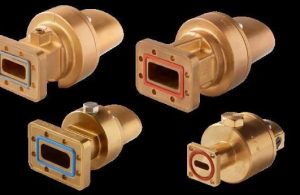How Do Elliptical Waveguides Differ from Standard Waveguides?
Waveguides are essential components in the field of microwave and radio frequency transmission, serving as the conduits for guiding electromagnetic waves. Among the various types of waveguides, elliptical and standard rectangular waveguides are commonly used, each with distinct characteristics and applications. Understanding the differences between these two can provide deep insights into their suitability for specific technological requirements.

Design and Structural Differences
Elliptical waveguides feature an elliptical cross-section, unlike the more common rectangular shape found in standard waveguides. This unique shape influences various physical and operational attributes of the waveguide. One of the key advantages of an elliptical cross-section is its ability to reduce the internal reflection of the wave, which often occurs at the broad walls of rectangular waveguides. Reduced reflection within the waveguide results in lower signal attenuation and can significantly enhance signal quality over long distances.
Frequency Range and Flexibility
Elliptical waveguides generally offer a wider frequency range compared to their rectangular counterparts. The design allows for supporting both lower and higher frequency bands effectively. This characteristic is particularly beneficial in applications where a wide bandwidth is essential, such as in broadband communications systems.
Additionally, the physical flexibility of elliptical waveguides makes them more suitable for installations that require bending and twisting through complex environments. Unlike rigid rectangular waveguides, elliptical ones can be more easily deployed in tight spaces, making them ideal for use in urban infrastructure or in vehicles where space is at a premium.
Mode Dispersion and Power Handling
Mode dispersion, which refers to the spread of signal phases across different modes, tends to be lower in elliptical waveguides. This reduction in mode dispersion is beneficial for maintaining the integrity of the transmitted signal, particularly over longer distances. Furthermore, elliptical waveguides can handle higher power levels due to their ability to more efficiently distribute the electromagnetic field across the waveguide's cross-section.
Applications in Modern Systems
The practical applications of elliptical waveguides are diverse and significant. They are frequently used in satellite communications, where signal integrity and power handling are critical. Additionally, their flexibility and lower attenuation make them well-suited for military and aerospace applications, where reliability under physical stress and optimal performance are mandatory.
Cost and Manufacturing Considerations
While the benefits of elliptical waveguides are clear, they do come with higher manufacturing complexities and costs. The production of elliptical waveguides requires more precise fabrication techniques, which can increase the overall cost of these components. However, for many advanced applications, the higher performance and flexibility justify the additional cost.
In conclusion, elliptical waveguides offer several advantages over standard rectangular waveguides, including better power handling, reduced signal attenuation, and greater flexibility. These benefits make them highly desirable in advanced communication systems, where performance and reliability are paramount. The choice between elliptical and standard waveguides will largely depend on the specific requirements of the application and the environment in which the system will operate.